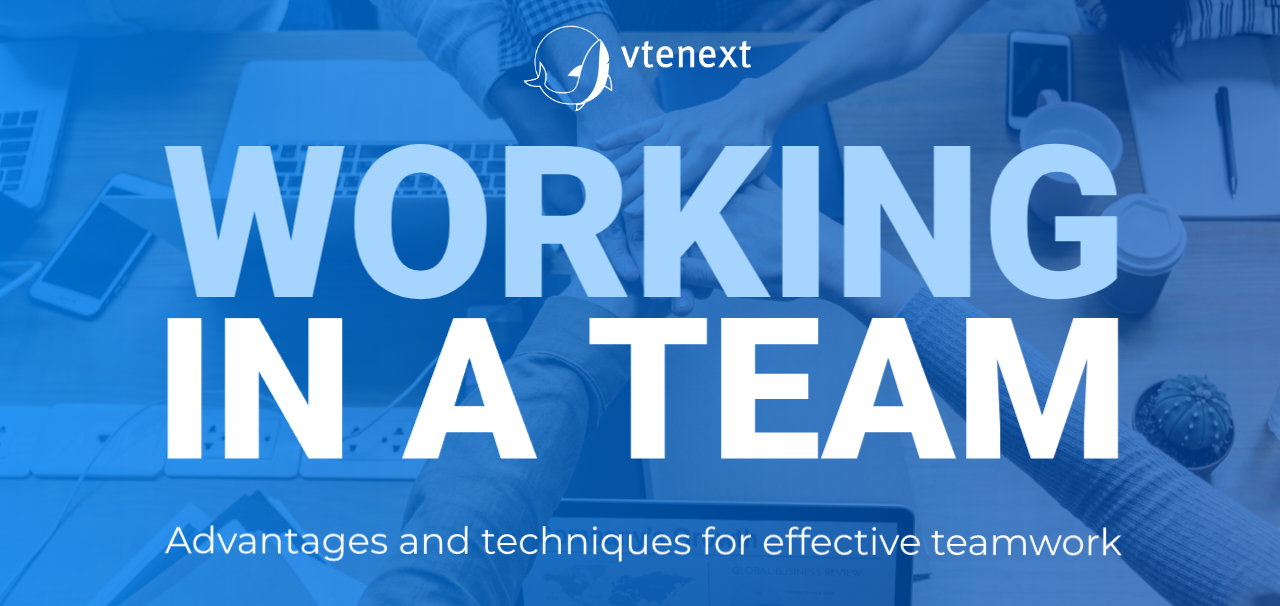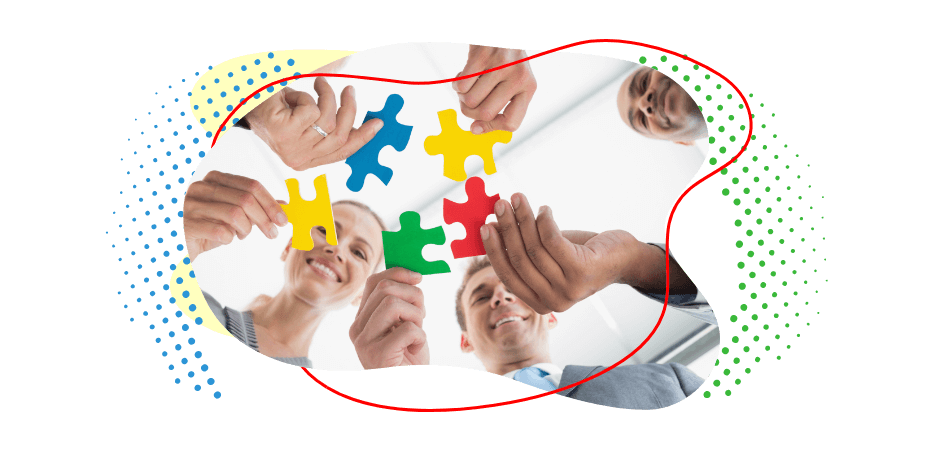The way in which businesses operate is constantly changing: multidisciplinary projects, hybrid teams, shared objectives, and increasingly complex deadlines require not only technical expertise but also the ability to create synergies, appreciate differences and operate in a cooperative environment.
A close-knit group is not born spontaneously: it requires listening, mutual respect, transparent communication, and a sense of collective responsibility. When these conditions are met, teamwork generates innovation, increases efficiency and contributes to a positive business climate where each individual feels an active part of a larger project.
Working in teams: meaning
Working in a team means much more than joining forces with colleagues to achieve a common goal. It is the combination of different skills, talents, visions and experiences, all oriented towards a shared direction in a harmonious way. The true value of teamwork is when differences do not become a source of friction, but are key ingredients for building stronger, more inclusive and innovative solutions.
Today, as business processes become more complex, effective collaboration becomes a competitive asset. Rapid changes imposed by markets, the adoption of ever new technologies and the overcoming of traditional corporate hierarchies make interdependence a basic element. Working well in a team means being able to contribute with autonomy, without losing the connection with others, finding a balance between professional individuality and sense of organizational belonging.
A team must be an intelligent system that learns, adapts and grows. When it works, it generates value for the entire organization, accelerates decision-making and fosters a work environment that is driven by trust and continuous improvement.
The benefits of effective collaboration in the company
When a team works, productivity increases exponentially, processes are simplified, and the quality of solutions improves thanks to the contribution of different perspectives. The collective energy emanating from cooperation transforms individual goals into shared goals, stimulating a sincere commitment to the end result.
Working together in a structured way also promotes lifelong learning. The exchange of skills promotes the professional growth of individuals and strengthens the human capital of the organization. In addition, the presence of an internal support network allows a more agile management of critical issues: complex problems are tackled with more creative and less fragmented approaches.
Effective collaboration has a significant impact on people’s well-being. It increases the sense of belonging and reduces stress, as the burden of responsibility is more evenly distributed.
The basic characteristics of good teamwork
The ability of each member to put their skills at the service of the team, with a constructive spirit and mental flexibility, is the basis of any good teamwork. The complementarity of roles thus becomes one of the pillars: what one lacks can be compensated by another’s experience, generating a multiplier effect on collective performance.
Clarity of roles and objectives is a second key element: in the absence of direction and structure, even the most talented team risks proceeding in a disorderly way, diluting valuable energies. A team works when each member knows what to do, why they do it and how their contribution fits into the bigger picture.
The quality of the relationship between members is also crucial. Trust, genuine listening, willingness to confront and the ability to manage conflicts in a mature way are the fertile ground on which solid collaboration grows. In a truly effective team, individual vulnerabilities are not perceived as limits, but as opportunities to activate mutual support and shared learning dynamics.
Finally, what distinguishes a good teamwork is the responsible autonomy: each component works in compliance with common lines, but with the freedom and courage to propose, act, decide.
Develop effective communication within the team
Team communication really works when it is intentional, bidirectional and listening-oriented. It is not enough to be clear: one must also know how to understand, process, and connect with others. This implies adopting an inclusive communicative style that values each point of view, giving everyone space, even those who tend to remain silent. Silences, in fact, often speak louder than words: being able to grasp and decipher can make a difference in the cohesion of a group.
Another essential aspect is the ability to adapt one’s communicative register to the context and the audience. The ability to modulate tone, timing and channels (writing, voice, gestures, digital tools) improves the quality of exchanges and reduces misunderstandings and friction. There is no single form of winning communication, but infinite possible modalities that, if used consciously, can strengthen each phase of group work: from planning to review, from brainstorming to conflict resolution.
Finally, effective communication in the team is also one that feeds on constant, clear and constructive feedback. It is not an attitude to have only in critical moments, but rather a daily cultural practice, carried out with openness, respect and a focus on improvement.
Managing conflicts and turning them into opportunities for growth
Within a team, conflict is not necessarily a sign of dysfunction. Disagreement, if managed with intelligence and awareness, opens spaces for authentic confrontation, brings out blind spots and stimulates the development of more robust solutions. What makes the real difference is not the presence or absence of the conflict, but the quality of the collective response.
Managing conflicts in a constructive way means first of all recognizing them, accepting differences as a natural part of group dynamics. Denying or avoiding them only leads to the silent accumulation of tensions that, over time, can compromise collaboration. Instead, we need an internal culture in which expressing concerns or criticism is not perceived as a threat, but as a form of relational maturity and commitment to improvement.
For a conflict to turn into an opportunity, it is necessary to create safe spaces in which people can express themselves without fear of judgment. In these contexts, the role of leadership is central: facilitating dialogue, ensuring impartiality and encouraging mutual listening are key skills. Tools such as mediation, one-to-one confrontation or the use of participatory techniques offer practical ways to deal with differences in a regulated and respectful manner.
Defining roles and responsibilities
Assigning tasks means recognising people’s potential and placing it where it can generate the greatest impact. Each role, when clearly defined, becomes a means for individuals to express their value and contribute uniquely to the success of the group.
The definition of roles must go beyond a simple functional description. It should take into account technical skills, personal inclinations, but also relational dynamics. In this way, responsibilities take on a deeper meaning: they impose obligations to be respected, but at the same time help create spaces where autonomy, creativity and sense of belonging can be exercised.
The importance of flexibility is often overlooked: although operational boundaries provide security, allowing some mobility between roles can be beneficial. This openness promotes cross-learning, stimulates cooperation and helps members better understand each other’s challenges, fostering empathy and team spirit.
Finally, for participation to be truly inclusive, every voice must find space, regardless of seniority, personality or professional background. Leadership, in this context, has a responsibility to ensure that decisions are not the monopoly of a few, but the result of real co-construction.
Establish common goals and values
Goals and values must be the solid foundations that guide decisions, shape behavior and allow people to stay aligned, even when the context changes or pressures increase.
What really turns a group of professionals into a cohesive entity is the goal. It is not enough to know the goal: it is essential to feel it as meaningful. When everyone understands not only what is to be achieved but also why, engagement increases, the motivation is strengthened and autonomy develops in a responsible way.
Values, on the other hand, are the unwritten code that shapes how people collaborate. Respect, transparency, inclusion, open-mindedness: these principles act as an implicit relational framework that helps to prevent conflicts, facilitate communication and build a solid internal culture. When values are shared – not simply stated – the team is able to act consistently even without constant supervision.
Neither should be seen as fixed: they must be co-created, revisited and reaffirmed over time. Involving the team in their definition and periodic review means creating a sense of collective responsibility that informs everyday decision-making.
How to use a CRM to work better in teams
To facilitate effective teamwork, it can be very useful to integrate digital tools that simplify collaboration and access to information. In this regard, CRM systems such as vtenext can play an important role. Often associated exclusively with sales and marketing, CRMs can also be valuable tools for cross-functional collaboration, as they centralize data, track customer interactions, and facilitate information sharing among different teams.
When used as a shared operating space, a CRM helps eliminate organizational silos and strengthen coordination between departments, improving the consistency of actions and the quality of decision-making.

